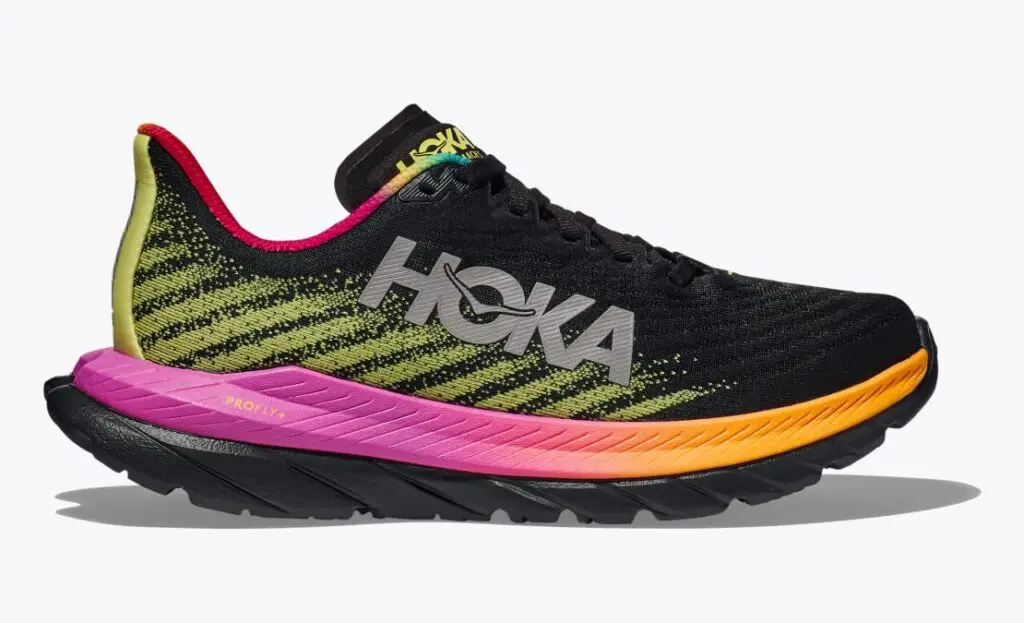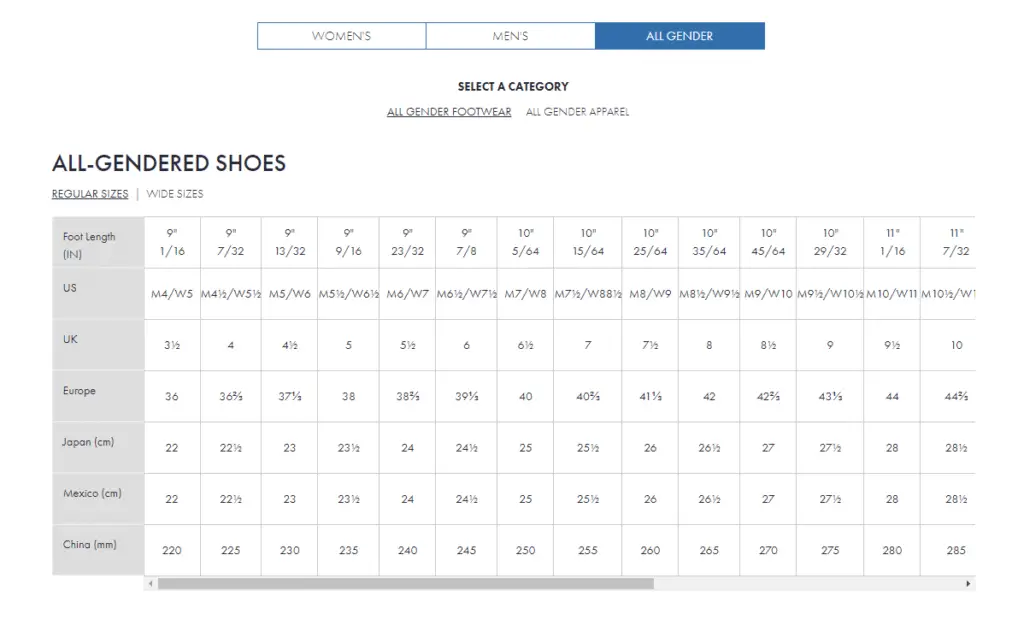Hoka Width B vs D: Check 5 Differences Before Choosing Size
Table of Contents
Hoka is a brand that a lot of pro and beginner athletes know and love. Whether it’s your first time running or your hundredth time, there’s no doubt that you’ve heard about them before. When grabbing a pair of new running shoes, you have to make sure they fit you well. But sizes don’t just apply to the length of your foot, it also apply to the width.
Luckily, Hoka offers plenty of width sizes to cater to all kinds of feet. Hoka also recognizes that females have different foot anatomy from men, which is why their width sizes are also categorized by gender.
Simply put, Hoka width ‘B’ is the standard Women’s shoe width, while ‘D’ is the standard Men’s shoe width. There’s some math behind finding the perfect width size for you, but we’ll get into that later in the article.
Now lace up and let’s hit the road – we’ve got lots of ground to cover!
Demystifying Hoka Shoe Widths
I’ve found that Hoka’s run slightly larger than other brands. However, it greatly depends on the model you’re trying on. For example, with the Bondi 8 I had to size up, but the Clifton 9’s ran true to size.
As we covered earlier, the standard shoe width for Men is classified as ‘D’. The standard shoe width for women is classified as ‘B’. Typically width sizes are measured in letters from the narrowest to the widest. The standard width for all-gendered shoes are between ‘C/D’.
But that’s not all they have! Hoka doesn’t leave any foot behind because they also have wide and extra wide width shoes.
Let’s further explore Hoka’s unique approach to width sizing.
Hoka’s Approach to Widths
Hoka One One is known for its unique design, which often features a chunky midsole with maximal cushioning. However, this design can have an impact on the fit, width, and volume of their shoes.
The thick midsole of the shoe creates more volume on the inside. This means that you’ll probably feel that Hoka’s are roomier than other shoes. For some runners, like me, they greatly appreciate the extra space. But, some runners prefer a more snug fit, and will either get a narrower width size, or they’ll use thicker socks to achieve that.
The Hoka ‘B’ width shoes are the standard fit for women’s shoes, but it’s also considered to be a narrower fit. After all, women have narrower feet compared to men. The ‘D’ width shoes on the other hand, are the standard width for men’s shoes or the medium width shoe.

Comparing Hoka B vs D Widths: 5 key differences
When it comes to choosing between Hoka’s B vs D widths, there are a few factors to consider:
1. Foot Shape and Dimensions
First of all, you might be wondering how to measure your feet in the first place. A good rule of thumb is to divide your heel-to-toe length by your foot’s width measurement, that’ll give you your length-to-width ratio which will help you decide which size to get.
Personally, the simplest way I’ve found to accurately measure your feet is by grabbing a pencil and simply standing on a piece of paper. If you’ve got someone to help you, it’ll make your measurements more accurate. While standing on the paper, simply draw a small horizontal line by your big toe, the balls of your feet, beside your pinky toe, and the side of your big toe.
To put it into numbers, the ‘B’ width is about 3.2mm narrower than the ‘D’ width.
2. Weight and Use Case
Having a lighter body weight means that you aren’t putting as much stress on the shoe’s structure and midsole, simply because you generate less impact. In that case, a narrower-width shoe, like the ‘B’ width will fit you better. A snug-fitting shoe will provide more support and lessen the chance of injury. However, if you’ll be running or hiking on rough terrain, it might be better for you to go a width size up to accommodate foot expansion.
On the other hand, if you’re heavier, then a wider-width shoe like the ‘D’, the wide ‘2E’, or the extra wide 4E width size will offer you more stability and support. The wider width will help distribute your weight more evenly, allowing you to be more stable as you run.
Ultimately, the weight comparison between ‘B’ and ‘D’ widths will depend on the shoe itself. Some models are crafted with heftier materials, while others are more lightweight. Overall though, from my experience, the weight difference between the two width sizes was really minimal. It’s minimal enough that most runners won’t really be able to tell the difference.
3. Gender Considerations
Women’s feet tend to be narrower than men’s feet. Women also have a higher arch. Simply put, a female’s foot anatomy is quite different from a male’s. Luckily, Hoka took this into account, which is why the standard width size for women is different from the standard width size for men.
Typically, women’s shoe sizes are 1.5 times smaller than men’s. For example, a woman’s size 8 is roughly equivalent to a man’s size 6.5. Regarding width sizing, it’s best to try the different width sizes for yourself as the decision will highly depend on your personal preference.

4. Comfort and Fit
The reason Hoka released different width sizes was to ensure comfort for every runner regardless of foot size, gender, or running needs. Of course, each width size will fit differently and that can also impact your comfort.
Having a snugly fitted shoe can help boost performance. For example, ‘B’ width running shoes are great for women or men with narrow feet who are into track running or speed workouts.
But if you’ve got a wider foot, then there’s no need for you to force yourself into wearing a ‘B’ width shoe. Or, if you prefer having more room in the toe box, then the ‘D’ width shoe is a great choice. It’s also super versatile and can be used for road running, trail running, and even marathons.
Remember, having a shoe that’s too snug can cause painful rubbing or blisters, or even worse, could lead to injury.
5. Availability
Specific widths vary from one model to another. While Hoka does try to provide different width options for their shoe models, it doesn’t apply to them all.
Here’s a list of their popular models available in ‘B’ and ‘D’ width sizing:
- Clifton Series – Lightweight, good for all kinds of runners
- Bondi Series – Provides maximum cushioning and support
- Rincon Series – Good for speed workouts and racing
- Speedgoat Series – Amazing for hiking or trail running
- Mach Series – Responsive and also very versatile
- Challenger Series – For trail runners who want comfort
As you can see, choosing Hoka B vs D width involves weighing several variables. Next, we’ll tackle common fit issues.
Finding Your Fit: How to Measure Your Feet for Hoka Shoes
To make this experience easier, let’s grab everything we’ll need so you can start measuring your feet ASAP.
You’ll need:
- A piece of paper
- A pen or pencil
- A ruler or measuring tape
- Running socks (Optional)
Let’s start by placing your paper on a hard and flat surface.
Now, this is just my personal preference, but I prefer putting on my socks before measuring my feet as this allows me to accommodate the thickness of my socks. This way, your measurements will be a little more accurate in terms of wear and won’t be too snug because there will be enough allowance for your socks.
If you’re alone you can do this part while sitting down. But, if you’re flexible or if you have some help, then do this part standing up. Place your foot on the paper and begin to trace around it. Do your best to keep the pencil perpendicular to the paper. Angling your pencil inward will cause your measurements to appear smaller.
After you’ve got the trace of your feet, grab your ruler and begin measuring. Start by measuring your foot length (from top to bottom), followed by your foot width (from side to side).

Lastly, refer to Hoka’s sizing chart to get a better idea for which width sizes to get.
Hoka Regular vs Wide
I find that Hoka Regular’s shoes are fairly standard. I know lots of runners who just go for the Regular width shoes by default, because it’s the safest option. I’ve also done that myself. They’re perfectly fine for people with average width feet. Definitely go for the Regular fit if you prefer a snug but not tight fit.
Hoka Wide’s on the other hand are perfect for runners who prefer a roomier fit or if they’ve got wide feet. Wider width shoes also provide more stability and prevent overpronation. However, wide width options aren’t available for every shoe model. Luckily, though, they’re usually available for Hoka’s most popular models.
How to Find Your Perfect Pair
To summarize everything, there’s no such thing as a one-size-fits-all shoe. Especially for athletic shoes, it’s really important to know your feet and learn about the different sizing options available out there.
For women or people with narrow feet, ‘B’ width sizes are your standard size. For men or women with wider feet, ‘D’ width sizes are the standard.
Consider your foot anatomy, your running needs, and your preferred fit before settling on a pair of running shoes, And of course, always aim to try the shoes on in-store first. Doing a quick lap around the store or just walking in place can help you determine if the shoe is the right one for you.
Finding the right fit may seem like a lot of work, but trust me, it’ll be so worth it. Running shoes that fit you perfectly, lengthwise and widthwise, will take your performance to the next level.
Now we’ve just crossed the finish line!
You’ve gained a better understanding of Hoka shoe widths and hopefully, you have a better idea on what to consider before making your next running shoe purchase.
FAQ
Do Hoka shoes run small or large?
It really depends on the model you plan on getting. Overall though, I find that most Hoka models are true to size. If you’ve got a trusty pair of Adidas, Brooks, Nike, or Saucony running shoes, then I recommend sticking to the same size.
However, don’t forget to consider the amount of cushioning your shoe will have. Hoka is known for their maximalist cushioning, but even still, some models have cushioning that takes up a lot of volume. For example, for the Bondi’s, I recommend going up a size.
How do I know if I need a wider vs. longer shoe?
You’ll know you need a wider shoe if you feel your shoes pinch your feet, especially in the forefoot and midfoot. Also, if you can visibly see your feet spilling out from the sides of the shoe, then it’s a telltale sign that you need something wider.
To know if you need a longer shoe, assess if your toes are comfy. If your toes are pressed up against the front of the shoe, then you should consider getting a longer size. Another good indicator is if you’ve gotten some sort of nail damage from your toenails pressing into the front of your shoe too much while you walk.
Can I stretch or widen Hoka shoes that are too narrow?
It’s possible! But only to some extent. You can stretch or widen them by about half a size, but no more. It’ll also highly depend on your shoe material, but either way, it’s good to remember that your shoe can only stretch so much before getting damaged.
Some methods you can look into include:
- Using a shoe stretcher
- Filling plastic bags with water, place them into your shoes, then put the shoes in the freezer
- Wearing thick socks and using a hairdryer to expand the shoe’s material
Stretching may not be effective for all shoe materials, and it’s possible that it won’t provide a perfect fit. If your shoes are excessively narrow and uncomfortable, it might be more practical to consider exchanging them for a wider size or exploring other Hoka models that offer wider width options.
Conclusion
Hoka is a pretty inclusive brand that offers many width sizing options to cater to as many runners as possible. However, it can get pretty confusing since there’s quite a number of sizing options available. Understanding these width sizes and learning how to measure your own width will be crucial to helping you pick out the perfect running shoe for you.
Just don’t forget, nothing will beat trying on the shoe in-store. Listen to your body and don’t force your feet into shoes that are too tight or too small for you.

In addition to my extensive coaching experience, I have spent over 10 years researching and testing various types of running shoes. I understand the importance of selecting the right shoe for each individual’s unique foot type, gait, and running style. I keep up-to-date with the latest shoe technology and have a comprehensive knowledge of the various brands and models available. Through my coaching and personal experience, I have helped runners find the perfect shoe to improve their comfort, performance, and overall running experience.